The Relationship between Spatial Behavior and External Spatial Elements in Ancient Villages Based on GPS-GIS: A Case Study of Huangshan Hinterland, China
Abstract
1. Introduction
2. Background
2.1. The Modularization of External Spatial Elements in Newly Built Rural Communities Has a Negative Impact on the Spatial Behavior of Villagers
2.2. The Reference Value of the External Spatial Elements of the Ancient Village
2.3. Research on the Spatial Behavior of Villages Associated with Spatial Elements Will Provide Specific References for Village Planning
3. Research Methods
3.1. Selection of Cases
3.2. Identification, Categorization, and Mapping of Space Elements
3.3. Collection of Villagers’ Spatial Behavior Data
3.4. Correlation Analysis of the Relationship between Space Elements and Spatial Behavior
- Loading the georeferenced drone aerial map of a village and the space element distribution map onto ArcMap and then matching the space element distribution map with the aerial photograph through the geographic alignment function.
- Adding space behavior GPS data—we loaded the GPS data onto ArcMap and set the coordinate system to the same coordinate system of the aerial photograph so that the spatial features and the activity points (and routs) were aligned.
- Spatial linking—linking GPS data to space element distribution maps using the Spatial Link function of ArcGIS.
4. Results
4.1. Categories of Space Elements of Ancient Villages and Their Distribution
4.2. Spatial Activities
5. Discussion
5.1. Ancient Village Key Space Elements and Topological Structure of Inhabitants’ Spatial Behavior
5.2. Ancient Village Residents’ Test Preference Meaning of the Space Element and Space Use Correlation
5.3. Design Practice as an Example of Application
- Motorways on the village outskirts. A two-way carriageway was included as a ring access bordering the village to meet the villagers’ demand for motor vehicles. Within the interior parts of the site, pedestrian walkways were separated from the vehicle lanes. Considering a quiet living atmosphere, carriageways were five minutes’ walking distance from residential buildings.
- Emergency fire lanes. Although only the periphery of the village was open to traffic, a 4 m wide lane was installed within the site to ensure that rescue vehicles could access it easily. Fast-tracked emergency rescue is significant for villages with aging residents.
- Parking. Two parking options were made available. One option was roadside parking spaces on the village’s exterior driveway. The second was the use of the threshing floor. The threshing floor was compacted with selected materials to support parking needs during crowd events. It could serve as a parking space during festive days, such as the Ching Ming Festival and Chinese New Year, during which, young people flee back with vehicles to the villages for family reunification.
- Ancestral halls (social and traditional worth value), temples (spiritual worth value), and other cultural buildings were installed on the new site.
6. Conclusions
- The research identified 16 spatial elements that support ancient village residents’ daily life and sociocultural processes. These elements are quite different from those introduced by village planning in newly built rural communities. The type (functional) variation is explained by the sociocultural context of the ancient villages and partly the variation in means of earning a living. Topography and geography are typical of both village types. Where a few common space elements of the new and ancient villages exist, their sociocultural values differ. The distinct nature of the ancient village space elements could be easily understood from the space behavior load of the villagers.
- The study is precise in spatial and behavioral research on specific elements rather than in a particular spatial range. Five space elements, including alleys, vegetable plots, threshing floors, docks, and flat areas, satisfy 94.6% of villagers’ needs for external space. From this finding, it becomes evident that the space behavior of the ancient villagers is quite different from that of the urban-oriented modern plan. The situation suggests that newly built rural community planning contradicts the preservation and modernization of villages. The research method on the relationship between space and behavior proposed in this study significantly improves the accuracy of the research. It relates the daily activities of villagers to specific spatial elements rather than spatial scope. Its value lies in the fact that designers can more accurately design corresponding space elements in the face of the villagers’ different space needs.
- The investigation of ancient village spatial elements and their spatial behavior indicates the logic of using a use-time-based topological structure of spatial elements quite distinct from the modern urban literature. In the urban literature, distance is a function of time cost. In the ancient village, the language is quite different—space is organized according to hours of the day activity. Another key feature of the spatial behavior of ancient villagers inferred from the three cases is that, regarding the spatial behavioral load, on average, the distribution between 7:00 and 15:00, is balanced. Although it is premature to provide a conclusive interpretation regarding the time–space philosophy wisdom of ancient villagers, the finding suggests a new direction for investigating the spatial behavior of ancient villagers.
- The study proposes and practices a design methodology for a newly built rural community based on the spatial elements and their relationship with the behavior of local ancient villages. It solves the problems of the modularity of spatial elements and the mismatch between space and villagers’ behavioral habits, which are common in newly built rural communities. From the research-informed newly built rural community design of the Maotian newly built rural community in Huangshan hinterland, based on the research results, updating the external spatial elements of ancient villages under the demands of contemporary life makes the application of spatial elements not only continue the villagers’ rudimentary way of life, but also satisfy the demands of the contemporary way of life on the external space.
- Avoid rural areas following the urban community construction pattern and modular design elements such as squares and lawns.
- Policies need to explore a new people-centered approach to urbanization. One of the main problems of the last round of urbanization was the mismatch between the newly built rural communities and the needs of villagers in their daily lives, resulting in the failure of these villagers, as “new citizens”, to integrate into the new environment, the first thing to be clarified in high-quality urbanization is the villagers’ natural habits and needs in their daily lives.
- The government should support the establishment of a database for research on the association between external spatial elements and the behavior of ancient villages in different regions. In China, there are clusters of ancient villages with different regional styles, such as Anhui, Fujian, and Shanxi, with very different architectural styles and folk cultures. The establishment of a database not only protects cultural heritage but also contributes to the sustainable development of the villages’ villages’ regional characteristics.
Author Contributions
Funding
Institutional Review Board Statement
Informed Consent Statement
Data Availability Statement
Conflicts of Interest
Appendix A
| GPS Code | Name | Age | Gender | Name | Age | Gender | Name | Age | Gender |
|---|---|---|---|---|---|---|---|---|---|
| 1 | Cheng Chaoying | 58 | Male | Wang Zhiguo | 64 | Male | Wang Xiuyun | 70 | Female |
| Wang Chaoli | 64 | Male | Wang Jianying | 66 | Female | Xu Xiaoyuan | 85 | Female | |
| Wang Yuexin | 66 | Male | Wang Jingxian | 67 | Female | Ye Yinfeng | 72 | Female | |
| Tao Jigen | 61 | Male | Xu Yinggui | 65 | Male | Jiang Xinyun | 30 | Female | |
| Wang Liansheng | 65 | Male | |||||||
| 2 | Wang Liansheng | 68 | Male | Fang Baoyi | 63 | Male | Li Chunzhi | 82 | Female |
| Cheng Yuehong | 37 | Female | Chu Shuisong | 62 | Male | Zhang Yinghao | 66 | Female | |
| Deng Wanqiong | 55 | Female | Wang Chang’e | 62 | Female | Wang Ruyi | 40 | Male | |
| Zhou Jiying | 67 | Male | Wang Shishuang | 76 | Male | Su Xinling | 54 | Female | |
| Jin Guanglin | 70 | Male | |||||||
| 3 | Wang Dawei | 67 | Male | Wang Jianjing | 67 | Male | Yang Sanliu | 56 | Male |
| Zhu Guoying | 54 | Male | Cheng Xiaoxiang | 58 | Female | Zhan Yuzhen | 70 | Female | |
| Shao Huifen | 65 | Female | Wang Zaohong | 52 | Female | Lee Do-kwon | 70 | Male | |
| Ye Heling | 48 | Female | Zhou Yongmei | 51 | Female | Huang Xiuzhen | 79 | Female | |
| Shao Cuiying | 69 | Female | |||||||
| 4 | Jiang Hui | 62 | Male | Wang Jinqian | 76 | Male | Jiang chang | 55 | Male |
| Ye Qisun | 65 | Female | Yu Rongju | 59 | Female | Jin Zirui | 70 | Male | |
| Xu Huali | 54 | Female | Cheng Xianying | 62 | Female | Jiang Lianyuan | 80 | Male | |
| Zhou Yongmei | 51 | Female | Wang Hengyu | 63 | Male | Sheng Ruizhen | 57 | Female | |
| Sun Ping’an | 70 | Female | |||||||
| 5 | Shao Lihua | 63 | Female | Yao Jialie | 73 | Male | Jin Zuhe | 67 | Male |
| Liu Hualin | 71 | Male | Wang Jinyao | 71 | Female | Cheng Gaisu | 76 | Female | |
| Hu Xiaolan | 55 | Female | Wang Xiuyun | 70 | Female | Wang Shisun | 62 | Male | |
| Wang Jingheng | 70 | Male | Ding Yihua | 51 | Female | Wang Haichun | 65 | Male | |
| Wu Tianci | 71 | Male | |||||||
| 6 | Cheng Lianhua | 67 | Female | Sun Ping’an | 69 | Female | Ding Xiansun | 46 | Male |
| Jiang Bin | 29 | Male | Yu Yunmei | 56 | Female | Wang Ruiling | 62 | Female | |
| Yu Shuijiao | 82 | Female | Zhang Tianlin | 63 | Male | Zhang Bosong | 71 | Male | |
| Wang Haining | 71 | Male | Wang Chang’e | 62 | Female | Wang Jianfei | 70 | Male | |
| Wu San’nai | 83 | Female | |||||||
| 7 | Huang Shuimin | 56 | Male | Cheng Xianyou | 61 | Male | Wang Zaogui | 72 | Male |
| Wang Lizhen | 74 | Female | Wu Yuxian | 64 | Female | Xu Yinggui | 65 | Male | |
| Jiang Shangren | 76 | Male | Huang Shunli | 68 | Male | Cheng Guobin | 65 | Male | |
| Sun Aizhu | 63 | Female | Sun Yiwen | 65 | Female | Wang Aiyun | 57 | Female | |
| Jin Jianzhong | 54 | Male | |||||||
| 8 | Cheng Xianxiang | 55 | Male | Sheng Ruizhen | 57 | Female | Zhu Rongfeng | 73 | Female |
| Tao Ainan | 72 | Female | Jiang Songbing | 72 | Male | Wang Xiaoying | 46 | Female | |
| Zhu Zhuannan | 66 | Female | Zhan Yuzhen | 70 | Female | Wang Aihong | 44 | Female | |
| Wang Liling | 62 | Female | Wang Yunzhen | 56 | Female | Han Ronghong | 67 | Male | |
| Ching-ying | 49 | Female | |||||||
| 9 | Zhou Liying | 64 | Male | Wang Yongfang | 62 | Female | Su Chang’e | 28 | Female |
| Cheng Guangzheng | 68 | Male | Wu Tianci | 70 | Male | Jin Qinglin | 72 | Male | |
| Zhu Jianglai | 72 | Male | Li Yueping | 63 | Male | Ye Shanyun | 66 | Female | |
| Jiang Zhenmei | 61 | Male | Huang Xuanmin | 65 | Male | Li Shunqiao | 58 | Female | |
| Zhan Yuzhen | 70 | Female | |||||||
| 10 | Wang Yongfang | 71 | Female | Liu Haian | 58 | Male | Wang fang | 68 | Female |
| Wang Guozhi | 71 | Male | Wang Yiliang | 70 | Male | Wang Guozhi | 71 | Male | |
| Zhu Zhuanmei | 74 | Female | Li Chengfa | 80 | Male | Cheng Juhua | 71 | Female | |
| Fang Meixiu | 73 | Female | Cai Juan | 36 | Female | Yao Jialie | 73 | Male | |
| Wang Guangfa | 67 | Male |
| Spatial Elements | Total | Male | Female | Time Period | ||||||||||
|---|---|---|---|---|---|---|---|---|---|---|---|---|---|---|
| 7–8 | 8–9 | 9–10 | 10–11 | 11–12 | 12–13 | 13–14 | 14–15 | 15–16 | 16–17 | 17–18 | ||||
| B-1 of Guanlu Village | ||||||||||||||
| Dock | 704 | 101 | 603 | 50 | 108 | 63 | 82 | 107 | 57 | 40 | 34 | 87 | 65 | 11 |
| Vegetable plots | 1302 | 528 | 774 | 127 | 170 | 117 | 419 | 144 | 72 | 174 | 57 | 0 | 0 | 22 |
| Dang | 58 | 44 | 14 | 5 | 0 | 1 | 0 | 1 | 8 | 26 | 6 | 0 | 11 | 0 |
| Alley | 3348 | 915 | 2433 | 128 | 264 | 454 | 203 | 923 | 261 | 427 | 463 | 22 | 147 | 56 |
| Pen | 12 | 9 | 3 | 0 | 7 | 0 | 0 | 0 | 4 | 0 | 1 | 0 | 0 | 0 |
| Arbor | 8 | 8 | 0 | 0 | 0 | 0 | 0 | 0 | 8 | 0 | 0 | 0 | 0 | 0 |
| Flat area | 890 | 411 | 479 | 0 | 321 | 67 | 36 | 208 | 27 | 129 | 2 | 9 | 74 | 17 |
| Bridge | 57 | 35 | 22 | 0 | 0 | 0 | 0 | 27 | 11 | 17 | 0 | 0 | 2 | 0 |
| Threshing floor | 1425 | 513 | 912 | 26 | 49 | 87 | 145 | 95 | 53 | 134 | 453 | 325 | 50 | 8 |
| Bamboo grove | 116 | 99 | 17 | 0 | 38 | 0 | 0 | 0 | 78 | 0 | 0 | 0 | 0 | 0 |
| B-2 of Guxi Village | ||||||||||||||
| Vegetable plots | 604 | 401 | 203 | 233 | 4 | 80 | 0 | 70 | 0 | 0 | 0 | 0 | 0 | 217 |
| Dang | 95 | 38 | 57 | 0 | 0 | 4 | 19 | 19 | 6 | 0 | 0 | 0 | 0 | 47 |
| Alley | 2203 | 2127 | 76 | 682 | 437 | 49 | 80 | 445 | 142 | 164 | 12 | 31 | 142 | 19 |
| Pen | 107 | 54 | 53 | 7 | 19 | 19 | 2 | 16 | 3 | 41 | 0 | 0 | 0 | 0 |
| Flat area | 458 | 395 | 63 | 55 | 64 | 287 | 4 | 6 | 18 | 15 | 0 | 0 | 0 | 9 |
| Threshing floor | 105 | 105 | 0 | 0 | 0 | 0 | 0 | 0 | 0 | 0 | 0 | 0 | 0 | 105 |
| Bamboo grove | 334 | 201 | 133 | 0 | 0 | 173 | 75 | 0 | 0 | 59 | 0 | 0 | 0 | 27 |
| B-3 of Wucun Village | ||||||||||||||
| Dock | 1504 | 263 | 1241 | 50 | 108 | 163 | 382 | 157 | 57 | 70 | 134 | 187 | 185 | 11 |
| Vegetable plots | 1326 | 561 | 765 | 38 | 103 | 148 | 217 | 118 | 67 | 227 | 167 | 88 | 144 | 9 |
| Dang | 198 | 54 | 144 | 0 | 27 | 5 | 6 | 89 | 12 | 6 | 8 | 45 | 0 | 0 |
| Alley | 4253 | 2009 | 2244 | 229 | 287 | 555 | 797 | 389 | 169 | 897 | 334 | 121 | 395 | 80 |
| Pen | 150 | 47 | 103 | 9 | 27 | 4 | 2 | 9 | 23 | 26 | 9 | 24 | 13 | 4 |
| Flat area | 1080 | 665 | 415 | 10 | 30 | 102 | 17 | 160 | 2 | 50 | 525 | 181 | 3 | 0 |
| Threshing floor | 968 | 302 | 666 | 18 | 54 | 24 | 58 | 23 | 12 | 133 | 333 | 206 | 89 | 18 |
| Bamboo grove | 21 | 3 | 18 | 0 | 0 | 4 | 5 | 0 | 12 | 0 | 0 | 0 | 0 | 0 |
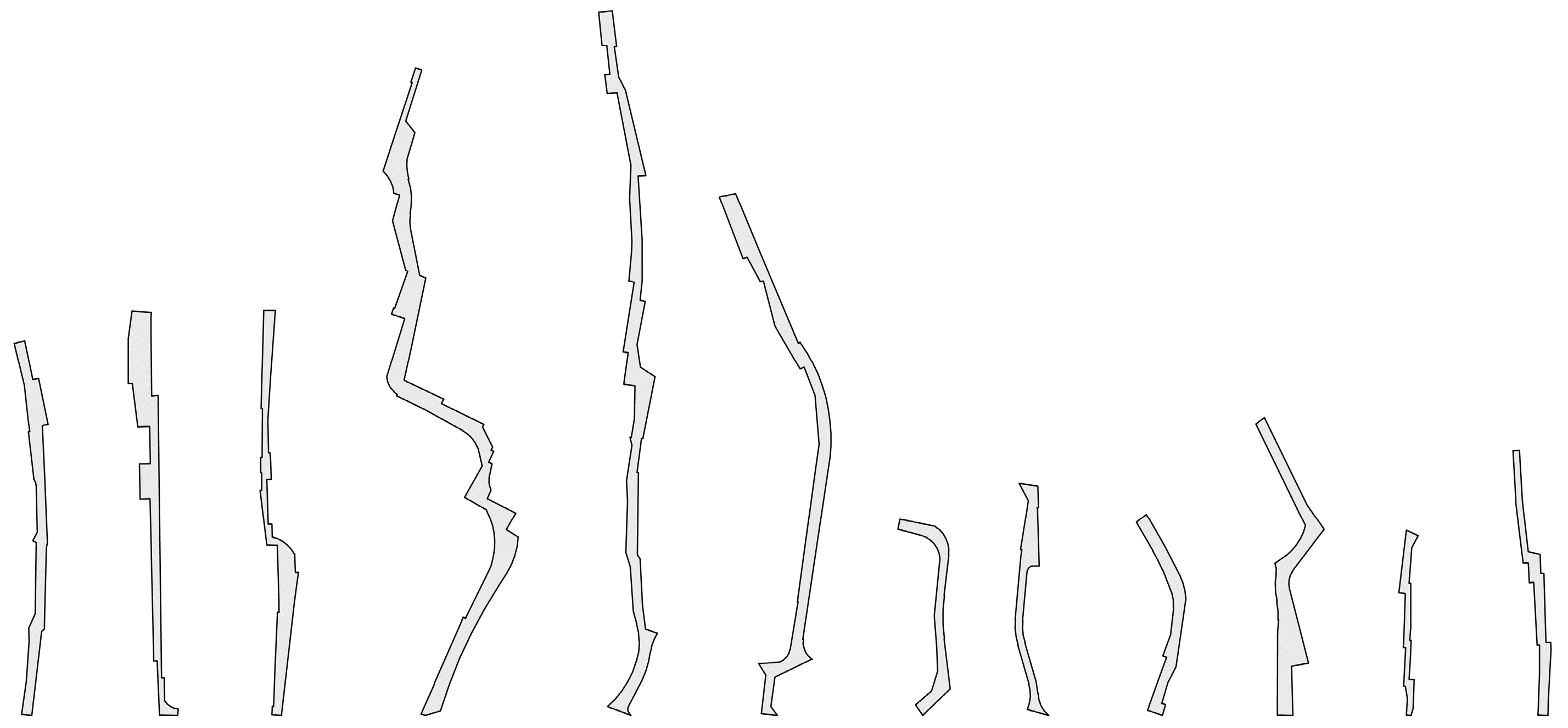
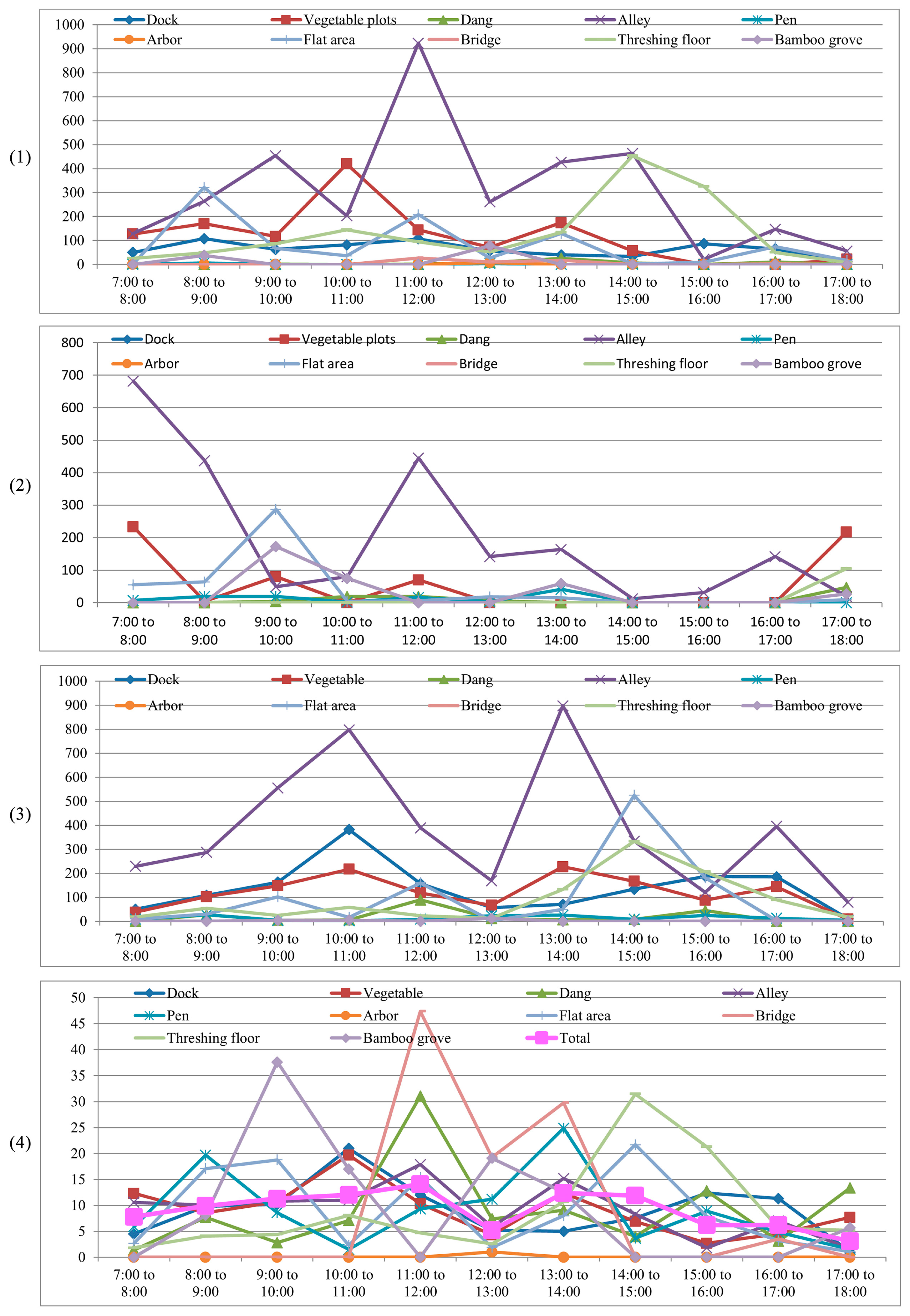
References
- Dandekar, H.C.; Hibbard, M. Rural issues in urban planning: Current trends and reflections. Int. Plan. Stud. 2016, 21, 225–229. [Google Scholar] [CrossRef]
- Frank, K.I.; Hibbard, M.; Shucksmith, M.; Tonts, M.; Long, H.; Zhang, Y.; Dandekar, H.C. Comparative Rural Planning Cultures. Plan. Theory Pract. 2020, 21, 769–795. [Google Scholar] [CrossRef]
- Sørvoll, J.; Bengtsson, B. The Pyrrhic victory of civil society housing? Co-operative housing in Sweden and Norway. Int. J. Hous. Policy 2018, 18, 124–142. [Google Scholar] [CrossRef]
- Mullins, D. Achieving policy recognition for community-based housing solutions: The case of self-help housing in England. Int. J. Hous. Policy 2018, 18, 143–155. [Google Scholar] [CrossRef]
- Ferreri, M.; Vidal, L. Public-cooperative policy mechanisms for housing commons. Int. J. Hous. Policy 2022, 22, 149–173. [Google Scholar] [CrossRef]
- Li, T.; Liang, Y.; Luo, W.; Zhang, J.; Dong, W. Exploration of the Spatial Distribution Characteristics and Influencing Factors of Traditional Villages: A Case of Shaanxi Province. Adv. Econ. Bus. Manag. Res. 2022, 217, 344–351. [Google Scholar] [CrossRef]
- Katapidi, I. Heritage policy meets community praxis: Widening conservation approaches in the traditional villages of central Greece. J. Rural Stud. 2021, 81, 47–58. [Google Scholar] [CrossRef]
- United Nations Educational, Scientific and Cultural Organization (UNESCO). Recommendation on the Historic Urban Landscape. Available online: https://whc.unesco.org/document/135559 (accessed on 10 November 2011).
- Owen, S. Local distinctiveness in villages: Overcoming some impediments to clear thinking about village planning. Town Plan. Rev. 1995, 66, 143–161. Available online: https://www.jstor.org/stable/40113699 (accessed on 10 March 2024). [CrossRef]
- Ranjan, D.G.; Chang, C. The Chinese Dragon Concept as a Spiritual Force of the Masses. Sabaramuwa Univ. J. 2010, 9, 65–80. [Google Scholar] [CrossRef]
- Hein, A. Theory and methods of settlement archaeology—The Chinese contribution. World Archaeol. 2023, 2023, 2216182. [Google Scholar] [CrossRef]
- Coggins, C.; Chevrier, J.; Dwyer, M.; Longway, L.; Xu, M.; Tiso, P.; Li, Z. Village Fengshui Forests of Southern China: Culture, History, and Conservation Status. ASIANetw. Exch. 2012, 19, 52–67. [Google Scholar] [CrossRef]
- Hibbard, M.; Frank, K.I. Notes for a Substantive Theory of Rural Planning: Evidence from the US Experience. Plan. Theory Pract. 2019, 20, 339–357. [Google Scholar] [CrossRef]
- Zhu, Q.; Liu, S. Spatial Morphological Characteristics and Evolution of Traditional Villages in the Mountainous Area of Southwest Zhejiang. ISPRS Int. J. Geo Inf. 2023, 12, 317. [Google Scholar] [CrossRef]
- Wu, C.; Chen, M.; Zhou, L.; Liang, X.; Wang, W. Identifying the Spatiotemporal Patterns of Traditional Villages in China: A Multiscale Perspective. Land 2020, 9, 449. [Google Scholar] [CrossRef]
- Wu, J.; Siu, K.W.M.; Zhang, L. Intergenerational Integration in Community Building to Improve the Mental Health of Residents-A Case Study of Public Space. Behav. Sci. 2023, 13, 292. [Google Scholar] [CrossRef]
- Gulati, R. Neighborhood spaces in residential environments: Lessons for contemporary Indian context. Front. Archit. Res. 2020, 9, 20–33. [Google Scholar] [CrossRef]
- Peng, Y.; Feng, T.; Timmermans, H.J.P. Expanded comfort assessment in outdoor urban public spaces using Box-Cox transformation. Landsc. Urban Plan. 2019, 190, 103594. [Google Scholar] [CrossRef]
- Owen, S. The Role of Village Design Statements in Fostering a Locally Responsive Approach to Village Planning and Design in the UK. J. Urban Des. 1998, 3, 359–380. [Google Scholar] [CrossRef]
- Arida, I.N.S.; Wiguna, P.P.K.; Narka, I.W.; Febrianti, N.K.O. Development Planning of Tourist Village Using Participatory Mapping (Case study: Mambal Village, Badung Regency, Indonesia). IOP Conf. Ser. Earth Environ. Sci. 2017, 98, 012044. [Google Scholar] [CrossRef]
- Yuliastuti, N.; Fahrizal; Hassan, A.S.; Arab, Y. Community-Based Spatial Planning in Supporting Equitable Eco-Villages at Tibang Village in Aceh Province of Indonesia. Int. Trans. J. Eng. Manag. Appl. Sci. Technol. 2021, 12, 1–10. [Google Scholar] [CrossRef]
- Yakubu, I. From a cluster of villages to a city: Housing politics and the dilemmas of spatial planning in Tamale, Ghana. Land Use Policy 2021, 109, 105668. [Google Scholar] [CrossRef]
- Ma, X.H.; Yang, X.X. To Narrow the Gap between Urban and Rural Development and Promote Common Prosperity. Reform 2023, 4, 1–13. [Google Scholar]
- Xiao, X.; Tang, C.; Liang, W. Spatial Distribution and Cultural Features of Traditional Villages in Beijing and Influencing Factors. J. Resour. Ecol. 2022, 13, 1074–1086. [Google Scholar] [CrossRef]
- Chen, Z. Flexible Urbanization: A Hypothesis Based on Pluriactivity and Mobility of Rural Employment. City Plan. Rev. 2016, 40, 59–66. [Google Scholar]
- Qiu, B.X. Discussion on Bottom Lines for China’s Healthy Urbanization. City Plan. Rev. 2014, 38, 9–15. [Google Scholar] [CrossRef]
- Grade, A. New Urbanism: Past, Present, and Future. Urban Plan. 2020, 5, 453–463. [Google Scholar] [CrossRef]
- Talen, E. A Research Agenda for New Urbanism; Edward Elgar: Northampton, MA, USA, 2019. [Google Scholar]
- Lv, B. Reconstructing Rural Culture under the Vision of Rural Revitalization: Necessity, Dilemma and Path. Truth Seeking 2019, 2, 97–108. [Google Scholar] [CrossRef]
- Zhao, X.Y.; Ju, S.L.; Wang, W.J. Intergenerational and gender differences in satisfaction of farmers with rural public space: Insights from traditional village in Northwest China. Appl. Geogr. 2022, 146, 102770. [Google Scholar] [CrossRef]
- Li, B.; Guo, H.X. Environmental reformation and behavioral characteristics of outdoor space in rural relocation residential quarter: Case study of rural relocation residential quarter in Yangzhou. Archit. J. 2014, 12, 49–54. [Google Scholar]
- Xiong, Y.; Zhu, T.; Zhai, T.T. Research on the Vitality Improvement of Rural Public Space Landscape in Jiangnan Area. Zhuangshi 2022, 7, 124–126. [Google Scholar] [CrossRef]
- Chen, L.; Fang, K.; Wang, X.P.; Zhang, W.; Zhu, G.; Zhang, Z.; Furuya, N. The spatial feature and use pattern of external space in Chongqing traditional urban settlement. J. Asian Archit. Build. Eng. 2023, 22, 125–138. [Google Scholar] [CrossRef]
- Qiao, L.; Li, J.S. A Study on the Preferences of Villages in Rural Planning. Urban Plan. Forum 2015, 2, 72–76. [Google Scholar] [CrossRef]
- Wang, L. The Future Scene of Villages: The Experience of Traditional Villages and Contemporary Settlement Planning. Archit. J. 2000, 11, 16–22. [Google Scholar] [CrossRef]
- Xue, D.; Weng, Z.B. The Construction of Community Public Space Based on the Good Life of Residents. J. Fujian Norm. Univ. 2020, 2, 75–80. [Google Scholar]
- Spagnolo, J.; de Dear, R. A field study of thermal comfort in outdoor and semioutdoor environments in subtropical Sydney Australia. Build. Environ. 2003, 38, 721–738. [Google Scholar] [CrossRef]
- Ye, C.; Ma, X.Y.; Gao, Y.; Johnson, L. The lost countryside: Spatial production of rural culture in Tangwan village in Shanghai. Habitat Int. 2020, 98, 102137. [Google Scholar] [CrossRef]
- Wang, G.W.; Luo, J.W. An Optimized Rural Landscape Design Strategy Based on the Patterns of Spatial Elements among Courtyard Houses in Historical Villages: Taking Huizhou Area as an Example. Chin. Landsc. Archit. 2021, 37, 83–88. [Google Scholar] [CrossRef]
- Huang, D.; Dai, D.H. Effect of Living Street’s Elements on Vitality—Taking Typical Streets in Shenzhen as an Example. Chin. Landsc. Archit. 2019, 35, 89–94. [Google Scholar] [CrossRef]
- Yu, B.; Lu, Y.; Zeng, J.X.; Zhu, Y.Y. Progress and Prospect on Rural Living Space. Sci. Geogr. Sin. 2017, 37, 375–385. [Google Scholar] [CrossRef]
- Zhang, F.; Qiu, B. The Study on the Reconstruction of Open Space in Old Cities from the Daily Life View; Southeast University Press: Nanjing, China, 2016; pp. 8–17. [Google Scholar]
- Mahmoud, R.A. Old Gourna: The Complexity of Vernacular Architecture/Urbanism and Cultural Heritage. Soc. Behav. Sci. 2016, 225, 200–215. [Google Scholar] [CrossRef][Green Version]
- Urban Planning Forum Committee. Special Interview: Rural Planning and Planning Education (1). Urban Plan. Forum 2013, 3, 1–6. [Google Scholar]
- Zhang, J.; Pang, J. Analysis of the Spatial Evolution of Ancient Settlement in Southern Fujian by System Synergism: Taking the Historic Village of Fuquan in Jinjiang of Fujian as Example. Archit. J. 2012, 4, 103–108. [Google Scholar] [CrossRef]
- Guo, M.F. Study on Human Settlements of the Ancient Villages of Likeng. Ph.D. Thesis, Beijing Forestry University, Beijing, China, 2007. Available online: https://kns.cnki.net/KCMS/detail/detail.aspx?dbname=CDFD9908&filename=2007077405.nh (accessed on 16 February 2007).
- Wang, Y.C.; Meng, X.D.; Zou, Q. The Pattern Language and Its Application in Public Open Space in Traditional Village. Chin. Landsc. Archit. 2016, 32, 44–49. [Google Scholar]
- Lu, J.S.; Jiang, M.; Su, Y. An implicit system of public space in contemporary villages: A case study in human. Archit. J. 2016, 8, 59–65. [Google Scholar] [CrossRef]
- Peng, Y.G. Landscape Analysis of Traditional Villages and Towns; China Building Industry Press: Beijing, China, 1992; pp. 63–106. [Google Scholar]
- Pei, Y.F.; Leng, J.W.; Gong, K. The Research of Classification and Quantification Based on Village Residential Drawing: A Case Study of Huizhou Traditional Village Group. Architect 2019, 1, 106–111. [Google Scholar]
- Li, J.J.; Luo, D.Y. Return to the Way of Landscape Construction in Traditional Villages without Landscape Architects: Landscape Construction Practice of Xihe Village in Xin County. Landsc. Archit. 2015, 12, 80–88. [Google Scholar] [CrossRef]
- Chen, Z.H.; Li, Q.X. Guanlu Village; Tsinghua University Press: Beijing, China, 2009. [Google Scholar]
- Zhang, H.L.; Chen, J.; Zhou, C.S. Research Review and Prospects of Traditional Villages in China. City Plan. Rev. 2017, 4, 74–80. [Google Scholar]
- Zhang, G.R. Evolution of Schemes of Human’s Life Space. Urban Plan. Forum 2004, 3, 60–66. [Google Scholar]
- Ren, Y.; Qin, D.N.; Li, B. Environment-Behavior Research on Public Space and Residential Space in Natural Village: A Case Study of Village D in Xiangshan of Ningbo. Archit. J. 2011, S2, 33–38. [Google Scholar]
- Li, D.J.; Zha, J.; Xu, W. Initial Exploration of Residential District Planning and Design for the Public Life in New Rural Areas. Archit. J. 2007, 4, 57–59. [Google Scholar]
- Bao, Z.; Jiang, H.; Ma, E.; Sun, Z.; Xu, L. A Longitudinal Spatial-Temporal Analysis of Ancient Village Tourism Development in Zhejiang, China. Sustainability 2023, 15, 143. [Google Scholar] [CrossRef]
- Zhu, J.; Xu, W.; Xiao, Y.; Shi, J.; Hu, X.; Yan, B. Temporal and spatial patterns of traditional village distribution evolution in Xiangxi, China: Identifying multidimensional influential factors and conservation significance. Herit. Sci. 2023, 11, 261. [Google Scholar] [CrossRef]
- Chen, W.; Yang, Z.; Yang, L.; Wu, J.; Bian, J.; Zeng, J.; Liu, Z. Identifying the spatial differentiation factors of traditional villages in China. Herit. Sci. 2023, 11, 149. [Google Scholar] [CrossRef]
- Liu, W.; Xue, Y.; Shang, C. Spatial distribution analysis and and driving factors of traditional villages in Henan province; a comprehensive approach via geospatial techniques and statistical models. Hetitage Sci. 2023, 11, 185. [Google Scholar] [CrossRef]
- Ma, Y.; Zhang, Q.; Huang, L. Spatial distribution characteristics and influencing factors of traditional villages in Fujian Province, China. Humanit. Soc. Sci. Commun. 2023, 10, 883. [Google Scholar] [CrossRef]
- Yang, X.; Kong, Z.; Li, X. Research on the Spatial Pattern of Traditional Villages Based on Spatial Syntax: A Case Study of Baishe Village. IOP Conf. Ser. Earth Environ. Sci. 2019, 295, 032071. [Google Scholar] [CrossRef]
- Ding, J.; Shen, X. Distribution Characteristics and Influencing Mechanism of Spatial Vitality of Tourist Villages: An Empirical Analysis of Hongcun Village Based on Multi-source Data. Tour. Sci. 2023, 2, 14064. [Google Scholar] [CrossRef]
- Sun, X.T.; Wang, L.J.; Wang, F. Behaviors of seniors and impact of spatial form in small-scale public spaces in Chinese old city zones. Cities 2020, 107, 102894. [Google Scholar] [CrossRef]
- Gehl, J. Cities for People; Island Press: Washington, DC, USA, 2010. [Google Scholar]
- Hanzl, M.; Ledwon, S. Analyses of human behavior in public spaces. In Proceedings of the 53rd ISOCARP/OAPA Congress, Portland, OR, USA, 24–27 October 2017; Available online: https://www.researchgate.net/publication/326736336_Analyses_of_human_behaviour_in_public_spaces (accessed on 10 March 2024).
- Gehl, J.; Svarre, B. How to Study Public Life; Island Press: Washington, DC, USA, 2013; pp. 49–78. [Google Scholar]
- Xiao, Y.; Wang, D.; Fang, J. Exploring the disparities in park access through mobile phone data: Evidence from Shanghai, China. Landsc. Urban Plan. 2019, 181, 80–91. [Google Scholar] [CrossRef]
- Hahm, Y.; Yoon, H.; Choi, Y. The effect of built environments on the walking and shopping behaviors of pedestrians: A study with GPS experiment in Sinchon retail district in Seoul, South Korea. Cities 2019, 89, 1–13. [Google Scholar] [CrossRef]
- Hirsch, J.A.; Winters, M.; Ashe, M.C.; Clarke, P.J.; McKay, H.A. Destinations that older adults experience within their GPS activity spaces: Relation to objectively measured physical activity. Environ. Behav. 2016, 48, 55–77. [Google Scholar] [CrossRef] [PubMed]
- Wei, C.; Dong, X.; Yu, D.; Liu, J.; Reta, G.; Kuriqi, A. An alternative to the Grain for Green Program for soil and water conservation in the upper Huaihe River basin, China. J. Hydrol. Reg. Stud. 2022, 43, 101180. [Google Scholar] [CrossRef]
- Xu, R.; Shi, P.; Gao, M.; Wang, Y.; Wang, G.; Su, B.; Huang, J.; Lin, Q.; Jiang, T. Projected land use changes in the Qinghai-Tibet Plateau at the carbon peak and carbon neutrality targets. Sci. China Earth Sci 2023, 66, 1383–1398. [Google Scholar] [CrossRef]
- Cao, Y.; Jiang, Y.; Feng, L.; Shi, G.; He, H.; Yang, J. Identification of Territorial Spatial Pattern Conflicts in Aksu River Basin, China, from 1990 to 2020. Sustainability 2022, 14, 14941. [Google Scholar] [CrossRef]
- Wu, X.; Wang, S.; Fu, B.; Liu, Y.; Zhu, Y. Land use optimization based on ecosystem service assessment: A case study in the Yanhe watershed. Land Use Policy 2018, 72, 303–312. [Google Scholar] [CrossRef]
- Chen, X.H.; Xie, W.Z.; Li, H.B. The spatial evolution process, characteristics and driving factors of traditional villages from the perspective of the cultural ecosystem: A case study of Chengkan Village. Habitat Int. 2020, 104, 102250. [Google Scholar] [CrossRef]
- Marschall, S. Homesick tourism: Memory, identity and (be)longing. Curr. Issues Tour. 2015, 18, 876–892. [Google Scholar] [CrossRef]
- Kim, J. The antecedents of memorable tourism experiences: The development of a scale to measure the destination attributes associated with memorable experiences. Tour. Manag. 2014, 44, 34–45. [Google Scholar] [CrossRef]






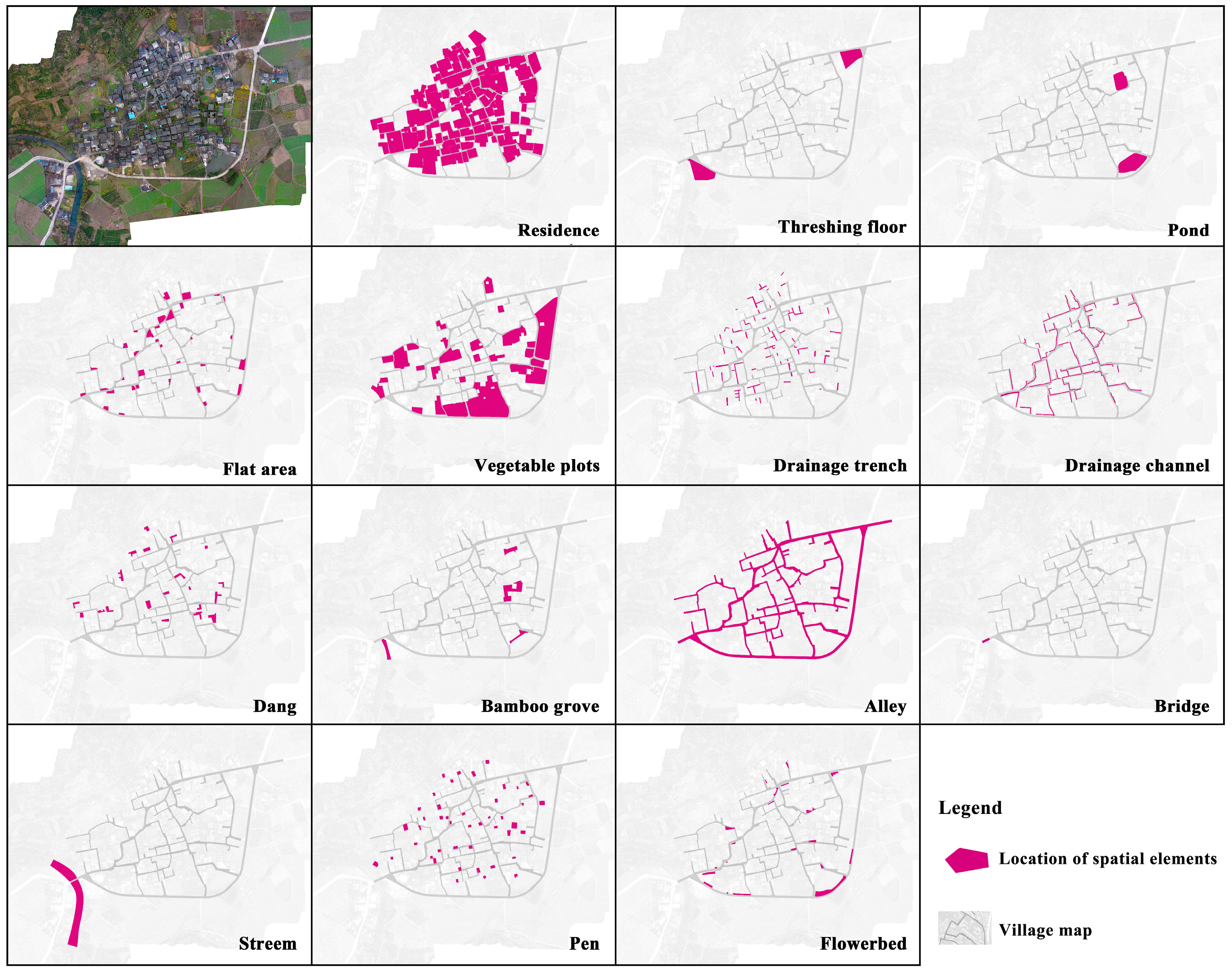

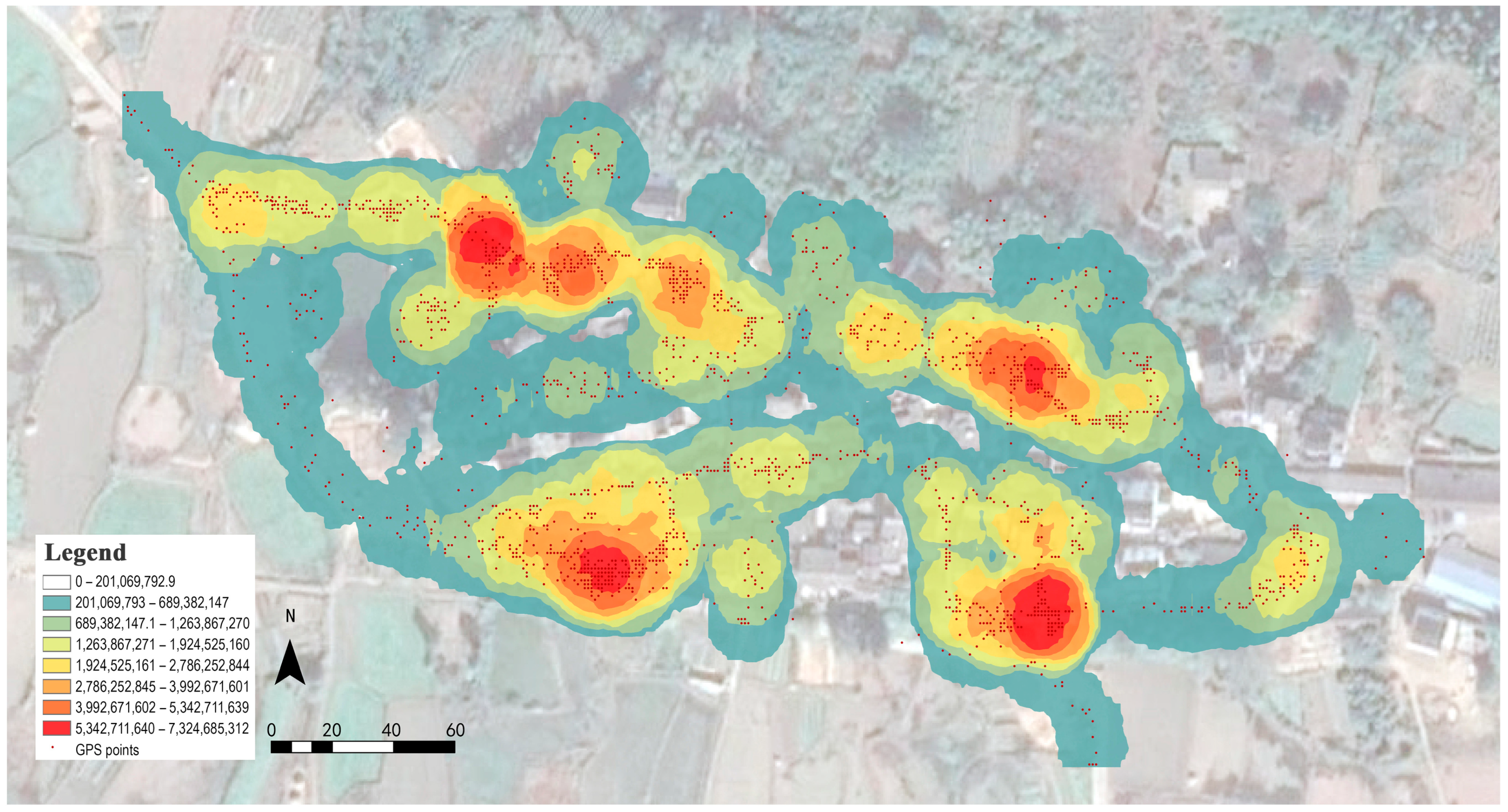



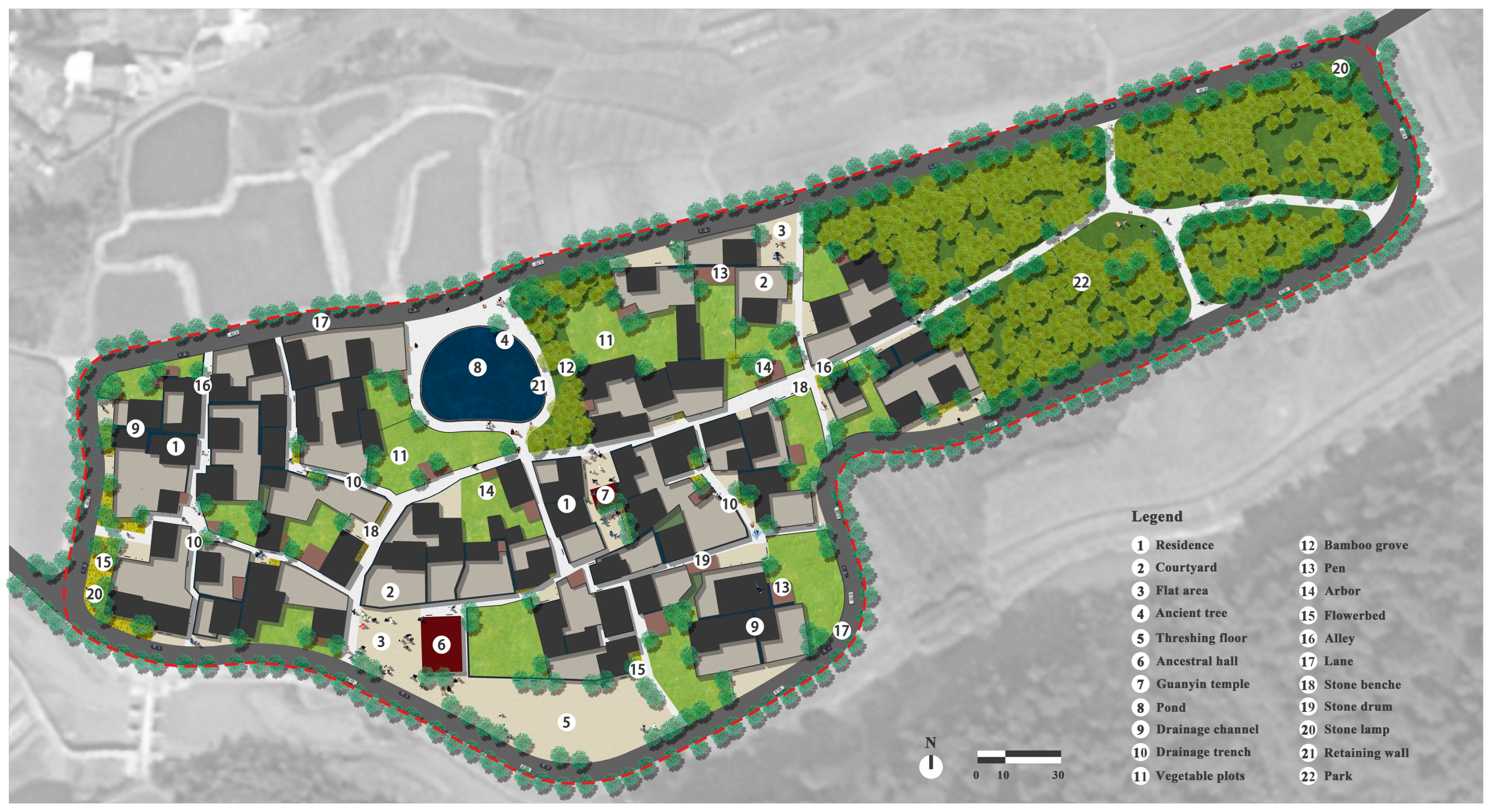

| No. | Strategies | Year | Main Characters |
|---|---|---|---|
| 1 | The construction of new socialist countryside | 2005 | The core objectives of this strategy are production development, comfortable life, civilized rural customs, clean environment, and democratic management. |
| 2 | The beautiful countryside | 2013 | This strategy proposes ten rural development models, including industrial development, ecological protection, suburban intensification, comprehensive social management, cultural inheritance, fishery development, grassland pasture, environmental improvement, leisure tourism, and efficient agriculture. |
| 3 | Rural tourism | 2015 | With the natural and humanistic objects with rural characteristics as the tourist attraction, on the basis of traditional rural leisure tourism and agricultural experience tourism, expand the development of conference vacation, leisure and entertainment projects, increase farmers’ income, and promote local characteristics and folk culture. |
| 4 | The rural revitalization strategy | 2017 | This is a comprehensive policy initiative to address the development challenges faced by rural areas and promote the sustainable growth of the countryside. The key aspects of this strategy include improving rural infrastructure, enhancing agricultural productivity, diversifying rural economies, improving rural living standards, strengthening rural governance, and coordinating urban–rural development, etc. |
| External Spatial Elements | Village A Shanghai Municipality | Village B Jiangsu Province | Village C Hainan Province | Village D Zhejiang Province | Village E Henan Province | Village F Liaoning Province | Village G Shanxi Province | Village H Anhui Province |
|---|---|---|---|---|---|---|---|---|
| Piazza | ● | ● | ● | ● | ● | ● | ● | ● |
| Lawn | ● | ● | ● | ● | ● | ● | ● | ● |
| Carriageway | ● | ● | ● | ● | ● | ● | ● | ● |
| Pavement | ● | ● | ● | ● | ● | ● | ● | ● |
| Car parks | ● | ● | ● | ● | ● | ● | ● | ● |
| Planting Pond | ● | ● | ● | ● | ● | ● | ● | ● |
| Basketball court | ● | ● | ||||||
| Drainage | ● | ● | ● | ● | ● | ● | ● | ● |
| Guard house | ● | ● | ● | ● | ● | ● | ● | ● |
| Pavilion | ● | ● | ● | ● | ||||
| Stream | ● | ● | ||||||
| Pond | ● | ● | ● | ● | ● | |||
| Bridge | ● | ● | ||||||
| Open-air stage | ● | ● | ● | ● |
| No. | Name | Description | Photo | Applied to Newly Built Rural Communities Surveyed or Not |
|---|---|---|---|---|
| 1 | Vegetable plots | Sites used for growing vegetables. These plots are either spaces between mansions or sites of abandoned buildings converted to vegetable farms. The inhabitants mainly support their vegetable needs from these small plots. | 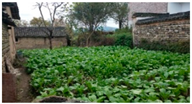 | No |
| 2 | Pen | The vegetable plots usually place the livestock pens near where the livestock are fed with vegetable leaves. At the same time, the livestock manure serves as organic fertilizer for the vegetables farming. | 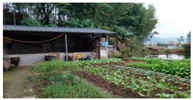 | No |
| 3 | Threshing floor | An extensive site used for drying grain and tea, but now also used for car parking. | 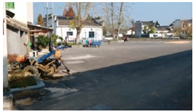 | Yes, developed into different forms |
| 4 | Flat area | Since the villages are often situated in mountainous areas with narrow lanes that are inconvenient for passage of crowds, the villagers set back their courtyard entrances and create small buffer spaces. Villagers usually get their grains dry here and often chat here. | 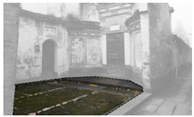 | No |
| 5 | Alley | It is not of equal width, as the boundaries are richly varied, thus forming many spatial nodes. It also has another form—the water street. | 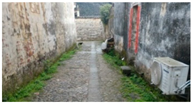 | Yes, developed into different forms |
| 6 | Pond | It consists of the general impoundment and the feng shui pond located at the main gateway of the village. Feng shui pond is one that villagers believe can protect the village and brings them good luck. | 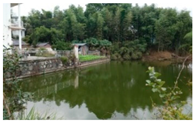 | Yes |
| 7 | Dock | Small platform beside the stream, usually used for washing clothes and vegetables. | 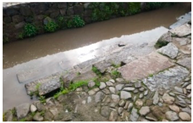 | No |
| 8 | Bridge | The dominant bridges in Hui area are stone slab; there also exist arch bridges and suspension bridges. | 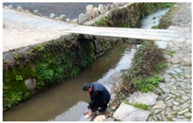 | Yes, developed into different forms |
| 9 | Flowerbed | A small plot in front of a house or side /node/ of a street used for growing ornamental flowers. |  | Yes |
| 10 | Bamboo grove | It is mainly used to regulate the microclimate and beautify the environment. |  | Yes |
| 11 | Dang | 垱[dǎng], low-lying space behind the compound usually used for storing daily garbage. | 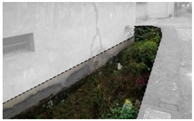 | No |
| 12 | Drainage channel | It is divided into open channels and culverts. The open channels are mostly distributed on the edge of the lanes, whereas the culverts are distributed below the main streets, covered by stone slabs. | 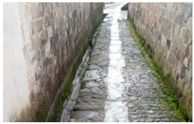 | Yes, developed into different forms |
| 13 | Drainage trench | It is an inaccessible gap between the houses, and it is only used for flood discharge. | 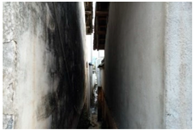 | No |
| 14 | Stream | Most of the ancient villages in the Hui area are built near water, and the streams are the main places for villagers to wash their clothes and vegetables. | 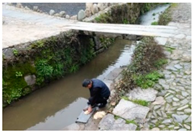 | Yes |
| 15 | Well | The wells abandoned after the villages installed piped water systems. | 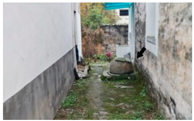 | No |
| 16 | Arbor | The villagers use simple materials such as bamboo and wood to build an arbor usually used for growing climbing vegetables and fruits. | 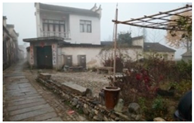 | Yes, developed into different forms |
Disclaimer/Publisher’s Note: The statements, opinions and data contained in all publications are solely those of the individual author(s) and contributor(s) and not of MDPI and/or the editor(s). MDPI and/or the editor(s) disclaim responsibility for any injury to people or property resulting from any ideas, methods, instructions or products referred to in the content. |
© 2024 by the authors. Licensee MDPI, Basel, Switzerland. This article is an open access article distributed under the terms and conditions of the Creative Commons Attribution (CC BY) license (https://creativecommons.org/licenses/by/4.0/).
Share and Cite
Wang, G.; Mehari, A.; Genovese, P.V. The Relationship between Spatial Behavior and External Spatial Elements in Ancient Villages Based on GPS-GIS: A Case Study of Huangshan Hinterland, China. Sustainability 2024, 16, 3756. https://doi.org/10.3390/su16093756
Wang G, Mehari A, Genovese PV. The Relationship between Spatial Behavior and External Spatial Elements in Ancient Villages Based on GPS-GIS: A Case Study of Huangshan Hinterland, China. Sustainability. 2024; 16(9):3756. https://doi.org/10.3390/su16093756
Chicago/Turabian StyleWang, Guowei, Ashenafi Mehari, and Paolo Vincenzo Genovese. 2024. "The Relationship between Spatial Behavior and External Spatial Elements in Ancient Villages Based on GPS-GIS: A Case Study of Huangshan Hinterland, China" Sustainability 16, no. 9: 3756. https://doi.org/10.3390/su16093756
APA StyleWang, G., Mehari, A., & Genovese, P. V. (2024). The Relationship between Spatial Behavior and External Spatial Elements in Ancient Villages Based on GPS-GIS: A Case Study of Huangshan Hinterland, China. Sustainability, 16(9), 3756. https://doi.org/10.3390/su16093756






